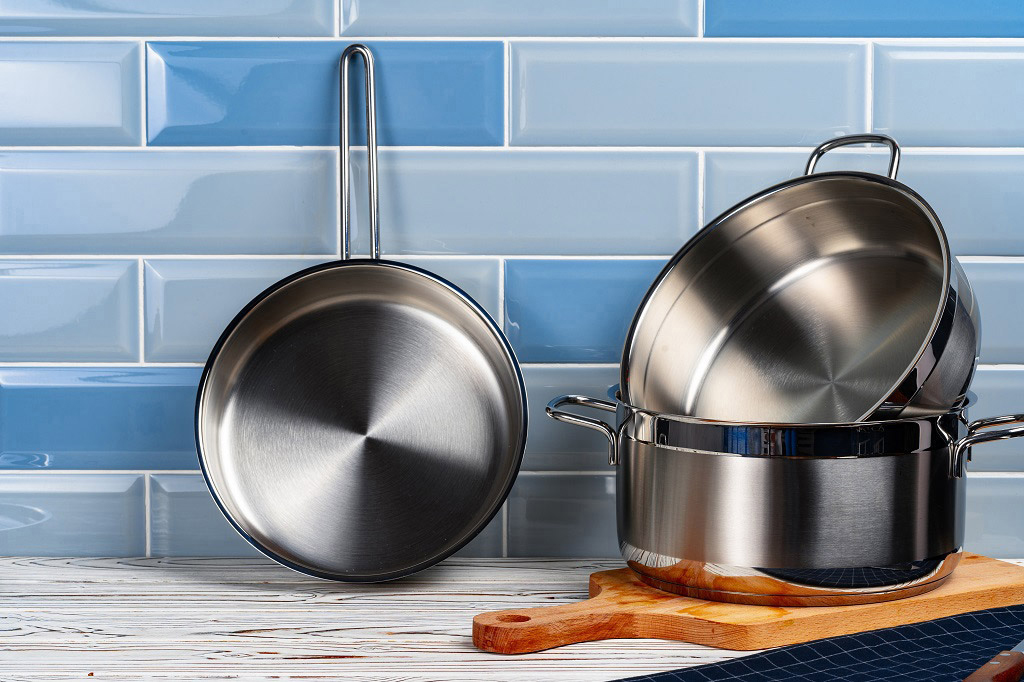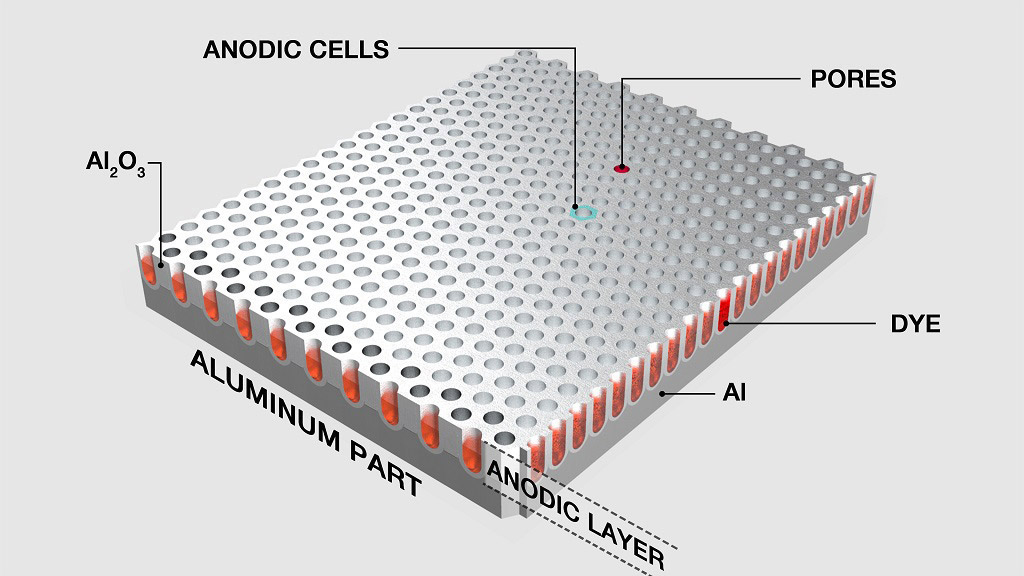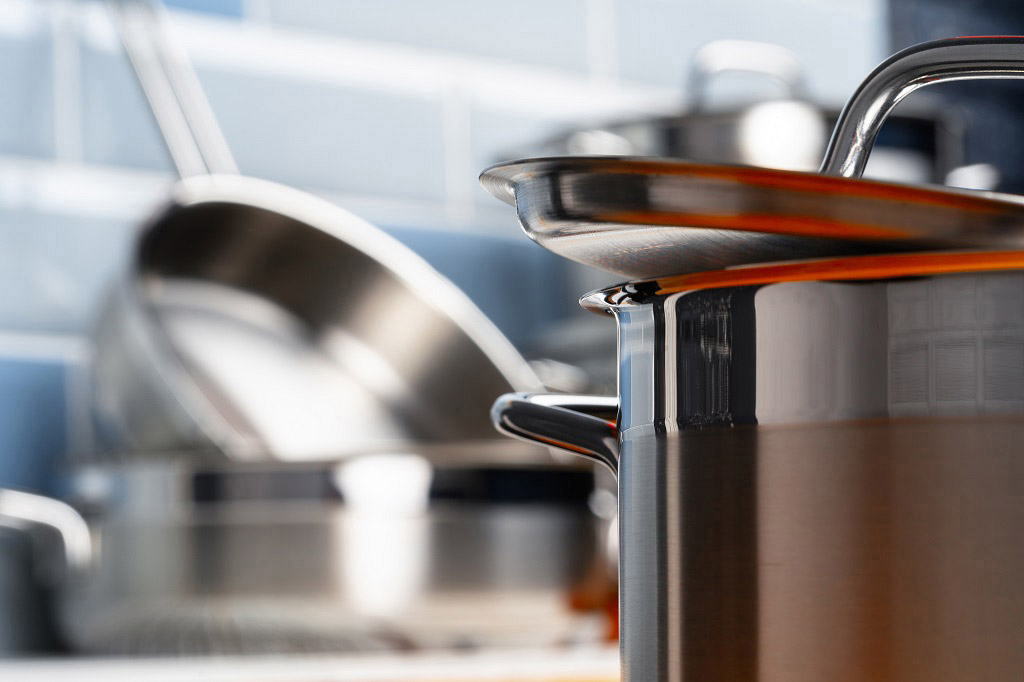
If you’re familiar with the cookware market, you’ll know that hard-anodized aluminum is a commonly used material. Although aluminum is suitable for cookware because it is lightweight, conducts heat well, and is generally inexpensive, it begs the question of whether or not it is safe to use in a food-related setting.
Standard aluminum is naturally reactive with food and is known to have toxic properties. Anodized aluminum has undergone an electro-chemical treatment to eliminate toxic properties but the base of the material is still aluminum. So, is anodized aluminum safe?
What Is Anodizing?

Before we delve into whether or not hard-anodized aluminum is safe, it’s important to understand anodizing. This refers to an electrochemical process that takes a metal surface and transforms it into a more durable material. After the anodizing process, aluminum forms an anodic oxide finish that is durable, aesthetically pleasing, and corrosion-resistant. In addition to aluminum, nonferrous metals such as magnesium and titanium can also be anodized.
The aluminum oxide isn’t applied to the surface, rather, it is integrated into the underlying aluminum substrate, making it highly chip and peel resistant. The process consists of immersing the aluminum directly into an acid electrolyte bath. Then, an electric current passes through the medium.
Is Anodized Aluminum Safe?
The question “is anodized cookware safe” is common in the food industry. Know that there are two different anodizing types that can be made food-safe (sulphuric anodizing and hard anodizing), however, this doesn’t mean they are food-safe in all scenarios.
Simply put, the evidence surrounding harm that stems from hard-anodized aluminum exposure is weak. This is widely thanks to the protective layer that aluminum hydroxide provides on top of the aluminum’s surface, ultimately reducing potentially harmful exposure when used for cooking. Anodized aluminum is used not only for cookware but for food contact surfaces and in food processing equipment.
Aluminum oxide is also insoluble except when it comes to alkaline or acidic conditions. Despite the aluminum-oxide coating coming into contact with acidic food on occasion, chances are low that the contact will cause harm.
How to Check If Your Anodized Cookware Is Safe

Here are a few considerations to ensure your anodized cookware is safe:
- The part needs to be made from food-safe aluminum
- The part needs to be either hard-anodized or sulphuric-anodized. If you have the choice, hard-anodized is preferred as it is more durable over time.
- It must have a boiling water seal
- After the process is over, it must be rinsed in clean, deionized water
Ensure that your object is made from quality aluminum that is suited for food such as BS EN 601 and BS EN 602. The sealing must also be completed with pure, deionized water as it is food safe; other sealing options may not be food-safe particularly when it includes nickel. If you are using a material that isn’t sealed, it may result in corrosion.
It’s also important to note that if the coating has been dyed, it is highly likely that it isn’t food-safe. Dyed coatings are also associated with issues as soon as they are heated, making them that much more problematic when used for cooking.
FAQ
Is anodized aluminum FDA-approved?
Please note that there are not any FDA “documents” on anodizing although it is a widely used material in the cooking industry. Although there is a strong precedent that anodized aluminum is a food-safe material, the FDA has not given its official approval. Please use your best judgment when determining whether or not to use this material.
What is the disadvantage of anodized aluminum?
Using anodized aluminum comes with a set of disadvantages to consider. This type of cookware is typically pricier than other nonstick pans. It also absorbs heat very quickly so it is not ideal when cooking items that require high heat. Cooking sprays can become stuck on anodized aluminum surfaces so it’s ideal to use oil or butter instead. Make sure to hand wash any hard-anodized pans to prolong their life.
Which is safer: anodized aluminum or stainless steel?
When it comes to toxicity, both cast iron and stainless steel are viewed as the least toxic materials. Materials such as hard-anodized aluminum, copper, and non-stick varieties are still okay to use but may need to be replaced more often.
Which is better: hard-anodized aluminum or just aluminum?
When comparing hard-anodized aluminum vs. regular aluminum, it is less likely to warp, corrode, or rust. Hard-anodized aluminum is safer thanks to its oxidized surface. When regular aluminum begins to break down, it can leave tiny pieces of metal into your food.
Conclusion
Hard-anodized aluminum is widely used for cooking-related purposes and has a host of benefits to consider. If you want to learn more about this material or you’re in need of other custom metal fabrication, don’t hesitate to reach out to us at Schaumburg Specialties for more information!